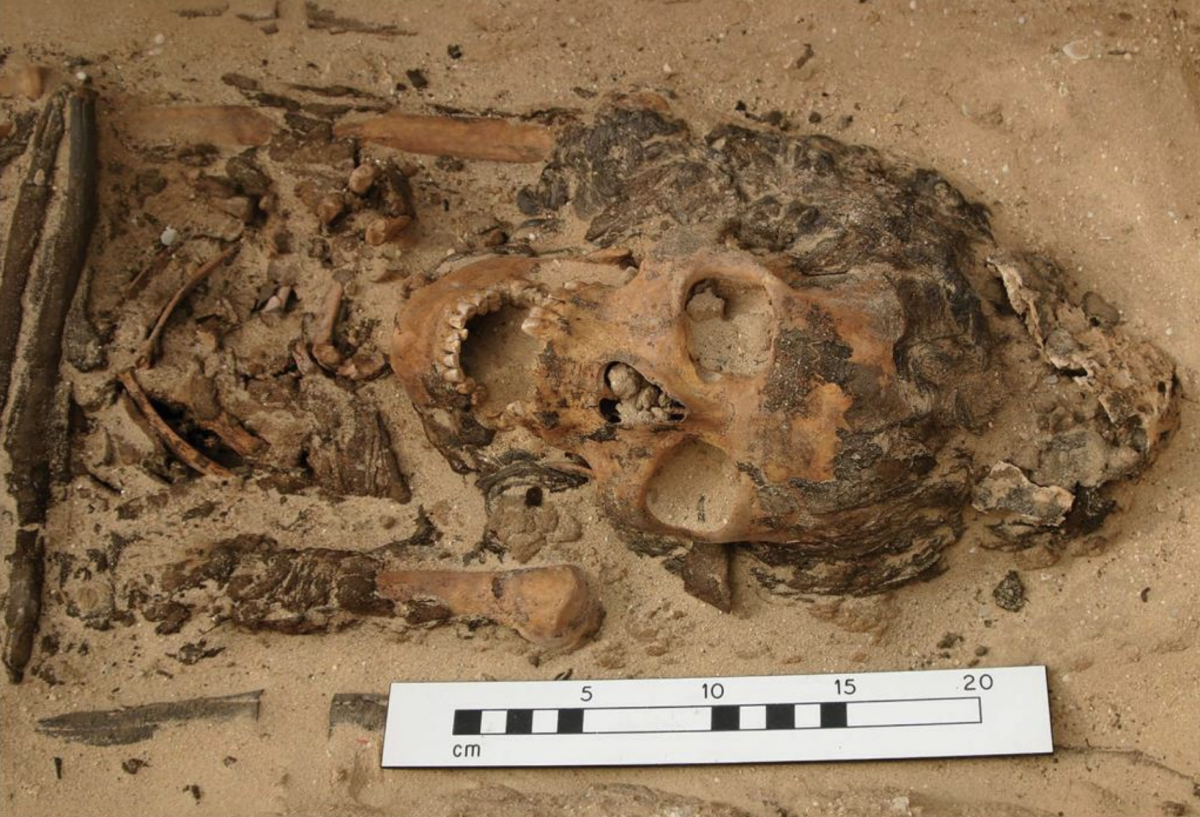Archaeologists say they have found the first Ancient Egyptian burial head cones at a site located around 200 miles south of Cairo.
Ancient Egyptian art frequently depicts people wearing distinctive cone-shaped headgear. However, none of these objects had ever been found.
According to a study published in the journal Antiquity, the cones were found at the archaeological site of Amarna—an ancient city built by the pharaoh Akhenaten as a center for the cult of the sun god Aten. The ruler promoted this god over traditional Egyptian polytheistic deities.
The city was only occupied for 15 years between 1347 and 1332 B.C and abandoned after the pharaoh's death. But even though it was occupied for a very short time, archaeologists have identified thousands of graves at the site—including many belonging to ordinary people who were not part of the elite.
In 2010, a team from the Amarna Project—in collaboration with the Egyptian Ministry of Antiquities—discovered that one of these graves contained the remains of a person wearing a head cone. And in 2015, they found another similar burial. Both these finds have been described in the latest study.
Many experts assumed that these kinds of head cones never existed and were purely symbolic, much like the halos seen around the heads of religious figures in Christian art.
Others meanwhile suggested that the cones had existed but were made of materials that would have completely degraded over the centuries, thus leaving no trace. The latest paper provides physical evidence, for the first time, that these objects did, in fact, exist.

The head cones that the team discovered had fragmented into pieces, however, they were able to reconstruct the original shape. Further analysis indicated that the cones were hollow and made of wax—most probably beeswax.
Notably, the researchers didn't find any evidence that the cones were made from an unguent—fat or wax perfumed with myrrh or other incenses—as some experts have hypothesized.
According to the researchers, it remains a mystery why the two individuals were buried with head cones. One possible explanation is that the headgear was believed to purify the wearer, enhancing their spiritual powers in the afterlife.
"The authors tentatively suggest that the Amarna cones were symbols meant to enhance the rebirth or personal fertility of the deceased in the afterlife," the authors wrote in the study.
Another explanation is that the cones were associated in some way with ideas of fertility and resurrection.
Uncommon Knowledge
Newsweek is committed to challenging conventional wisdom and finding connections in the search for common ground.
Newsweek is committed to challenging conventional wisdom and finding connections in the search for common ground.
About the writer
Aristos is a Newsweek science reporter with the London, U.K., bureau. He reports on science and health topics, including; animal, ... Read more
To read how Newsweek uses AI as a newsroom tool, Click here.








